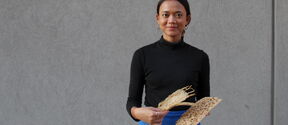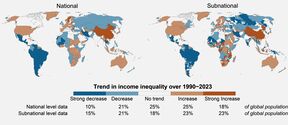Fibres from textile waste to be turned into new attractive consumer products
Aalto University and VTT Technical Research Centre of Finland are participating in an EU project called Trash-2-Cash, which pools together designers, researchers, materials suppliers and textile producers from all over Europe.
More than three million tonnes of textiles are thrown away in the EU every year. This is a growing problem, which the EU’s Trash-2-Cash project aims to solve by recycling, and developing high-performance fibres. The Trash-2-Cash project team, which includes experts from all levels of the production chain, is looking for techniques that can be used to spin, knit, sew or design innovative high-quality products from used textile fibres.
The joint project of Aalto University and VTT in the Trash-2-Cash programme aims at developing ecological and efficient techniques. The project involves developing techniques for pre-processing and washing waste textiles, separating fibres, and fiberisation.
The role of VTT is to focus on breaking down the fibres in waste textiles and making them suitable for the cellulose carbamate process. The Ioncell cellulose fibre manufacturing process will be carried out at the Aalto University. The Ioncell-F process has proved to be especially suitable for the recycling of cellulose waste. It is a very robust and stable process which allows the manufacture of textile fibres of the highest quality even from low quality wastes. Further, it allows also to separate the cellulose fraction from blends with polyester while preserving the macromolecular structure of polyester for further use.
Designers involved
Designers play an important role in the project to ensure the quality, performance and appearance of the new products appeal to consumers. The aim is to find new markets and uses for recycled textile fibres. Demo products will be manufactured together with commercial partners throughout the project.
The Trash-2-Cash project is part of the EU’s Horizon 2020 programme, and it will run from 2015 until 2018. The total budget is EUR 8.9 million, of which EU funding accounts for EUR 7.9 million. The project team includes 18 organisations from 10 EU countries. The project is coordinated by SP Technical Research Institute of Sweden. In addition to Aalto University and VTT, Finnish participants include the children’s clothing manufacturer Reima.
Aalto University’s and VTT’s Trash-2-Cash project in brief:
- VTT pre-processes and washes waste textiles and studies techniques to separate cotton and polyester
- Aalto University fiberises cotton using Ioncell technology
- VTT fiberises cotton using carbamate technology
- Project timescale: June 2015 – December 2018
- Timescale: started in June 2015 and ends in December 2018
- The project won the H&M Foundation Global Change Award in February 2016
For more information, please contact:
Trash-2-Cash: http://trash2cashproject.eu/
Aalto University School of Chemical Technology
Professor Herbert Sixta
Tel. +35850 3841764, herbert.sixta@aalto.fi
chem.aalto.fi
VTT Technical Research Centre of Finland Ltd
Research Professor Ali Harlin
Tel. +358 40 533 2179, ali.harlin@vtt.fi
11.2.2016 A process revolutionising cotton recycling wins the H&M Global Change Award
Read more news

From award-winning food packaging to researching biodesign spaces
From an early age, Ena Naito was drawn to both the sciences and design. She found the perfect place to bring those two worlds together.
Architect and designer Talisa Dwiyani combines passion, materials, and collaboration in her work
Indonesia-born Talisa's takeaway from Aalto University is the cross-disciplinary way of working.
Giiguulen Enkhsaikhan: More sustainable textiles with hemicellulose
Aalto University's doctoral researcher's presentation of hemicellulose won the third prize in the Marcus Wallenberg Young Researchers’ Challenge event in November






